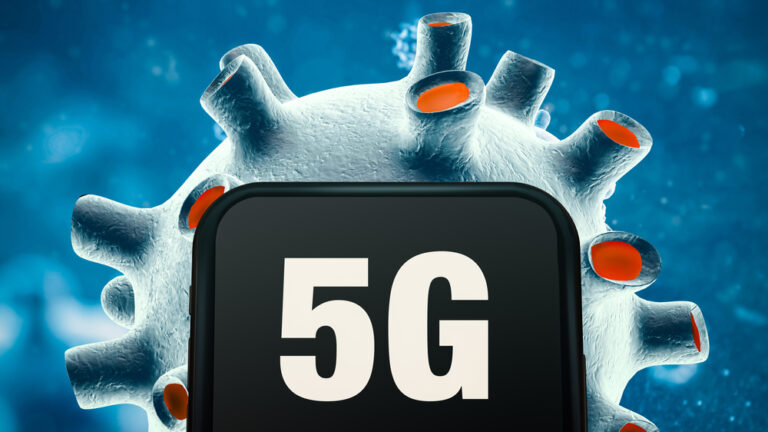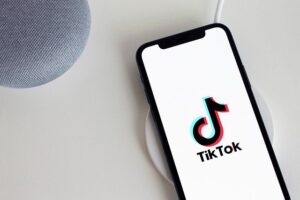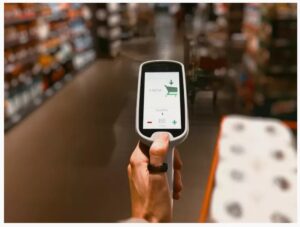2020 was supposed to be the Year of 5G. Experts speculated that all across the U.S., new 5G infrastructure would go live, massively expanding the nation’s 5G capacity and driving millions of Americans to purchase new 5G-capable phones.
Then, the COVID-19 pandemic struck. The global economy is currently being rocked by the impact of the novel coronavirus, and while wireless carriers insist that they’re moving full speed ahead with this year’s planned 5G rollout, that plan undeniably has some big question marks drawn over it.
“While nobody can predict what will transpire by the end of this tumultuous year, here are several ways that COVID-19 could impact the deployment of 5G.”
Hopefully, amidst that uncertainty, the telecom industry will find ways to adapt and overcome.
Greater Risk of Terrorism
Numerous 5G towers in the UK and European Union have been torched by arsonists in the past month. Police reports have linked the incidents to conspiracy theories spread via social media that 5G is responsible for the novel coronavirus outbreak.
Right now, there’s no clear data showing any kind of harm to humans from 5G, and the proposed connection between 5G and COVID-19 is completely unsupported by any kind of science. The world’s leading radiation watchdog has declared the technology safe, but that hasn’t stopped the actions of tower-burners drawn in by shady Internet news sources.
Because of these incidents, future 5G infrastructure development will likely require greater security to ensure that lives and property aren’t put at risk by fire-setting conspiracy theorists. That, in turn, could significantly raise the technology’s already-high deployment costs.
Lack of Consumer Demand
With U.S. unemployment exploding, carriers and device manufacturers may not see the big 5G sales they were hoping for this year. The U.S. seems almost certain to plunge into recession, meaning that consumers’ wallets will be much tighter than they’ve been in nearly a decade. If that happens, upgrading to a pricey new 5G phone is unlikely to be a high priority for most consumers, especially when 5G coverage is currently only available in a small minority of geographic areas.
To make matters worse, many of the events that would provide major use cases for 5G have been canceled due to the pandemic. With no sports, Eurovision or concerts to stream in HD, many consumers may see fewer reasons to upgrade.
Many analysts are waiting to see what course Apple will take. The tech behemoth was widely reported to be planning a 5G-enabled iPhone launch in 2020, but if the mobile device market takes a big hit from coronavirus or Apple’s China-based supply chain is majorly disrupted, that launch could well be pushed back.
There’s always the possibility that the economy could recover more quickly than anticipated, in which case consumer demand will likely improve as well. But if the recession is as long and as deep as some economists are predicting, the consumer electronics market (and 5G in particular) may be in for a long and bumpy ride.

Lack of Investment Capital
As the global economy contracts, it’s also possible that the investment capital needed to build 5G network infrastructure will dry up. Although telecom stocks aren’t expected to take a major hit from COVID-19 in the way that some economic sectors are, investment in 5G was already expected to be somewhat unreliable in 2020, and the coronavirus outbreak may make the required economic resources even more scarce.
5G is an unusually capital-intensive technology because of the short distance that its millimeter waves travel. Consistent 5G coverage at the highest speeds requires a large network of numerous antennas in small plastic electronics enclosures placed strategically throughout an area, and each antenna consumes almost double the power that a 4G antenna does. Investors may not be willing to spring for the costs associated with building out 5G capacity during a pandemic.
Internet of Things (IoT) devices have also been projected to be one of the major use cases for 5G once capacity becomes more widely developed. However, with many development projects on hold due to the economic contraction, this new generation of 5G-capable IoT devices may not arrive anytime soon, and that lack of compatible technology may hinder the speed at which businesses and other organizations adopt 5G.
Adapting the Tech Landscape
As stay-at-home orders to combat coronavirus have swept through the global economy, demand has massively increased for reliable high-speed teleconferencing and streaming. Netflix reported its best quarter ever as people stayed home to enjoy streamed entertainment, and video conferencing and voice chat have exploded in popularity as work, education and recreation have moved online.
While it’s too early to tell how carriers like AT&T and Verizon will change their Q3 and Q4 playbooks, it’s possible that projects like deploying 5G networks in arenas and stadiums will be put on the back burner in favor of innovations that could help improve speeds for customers stuck at home. T-Mobile, however, isn’t waiting around for anyone. It’s already said it would use an emergency spectrum grant from the FCC to increase network capacity for those working from home.
Meanwhile, China has weathered the first phase of the outbreak and is beginning to cautiously formulate its plan for re-opening the economy. That’s of interest for telecom analysts because China also already has most of the world’s existing 5G subscribers and by far the most advanced existing 5G infrastructure, and it’s using that infrastructure to deploy innovations such as hospitals staffed by 5G-powered robots.

The only sure thing about the unfolding COVID-19 pandemic is that there no longer are any sure things. The 5G rollout may suffer from the disruption in the economy, but the upsides of 5G technology are too powerful to ignore forever, so we can be reasonably hopeful that we’ll see the rollout continue once the economy begins to recover.










